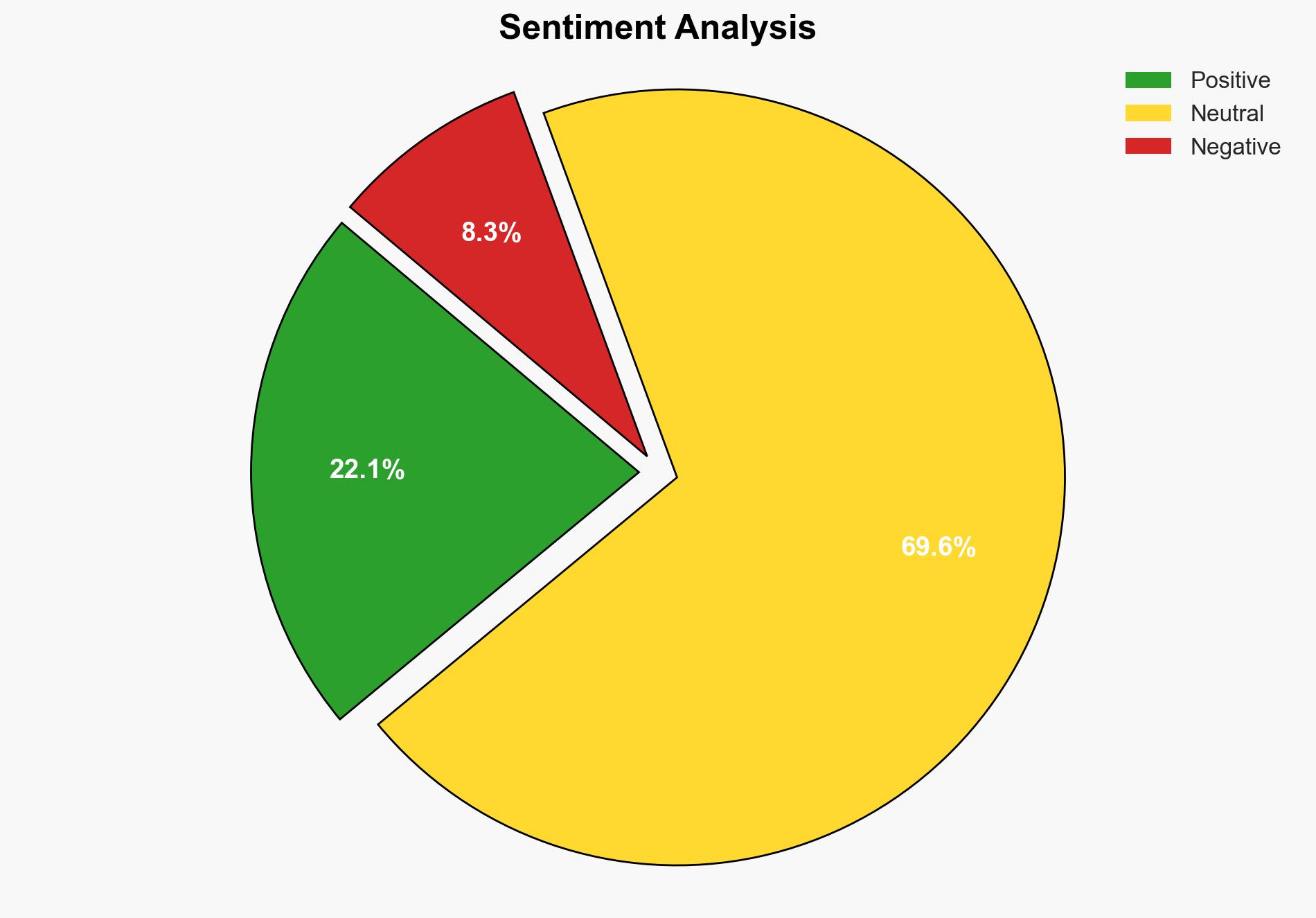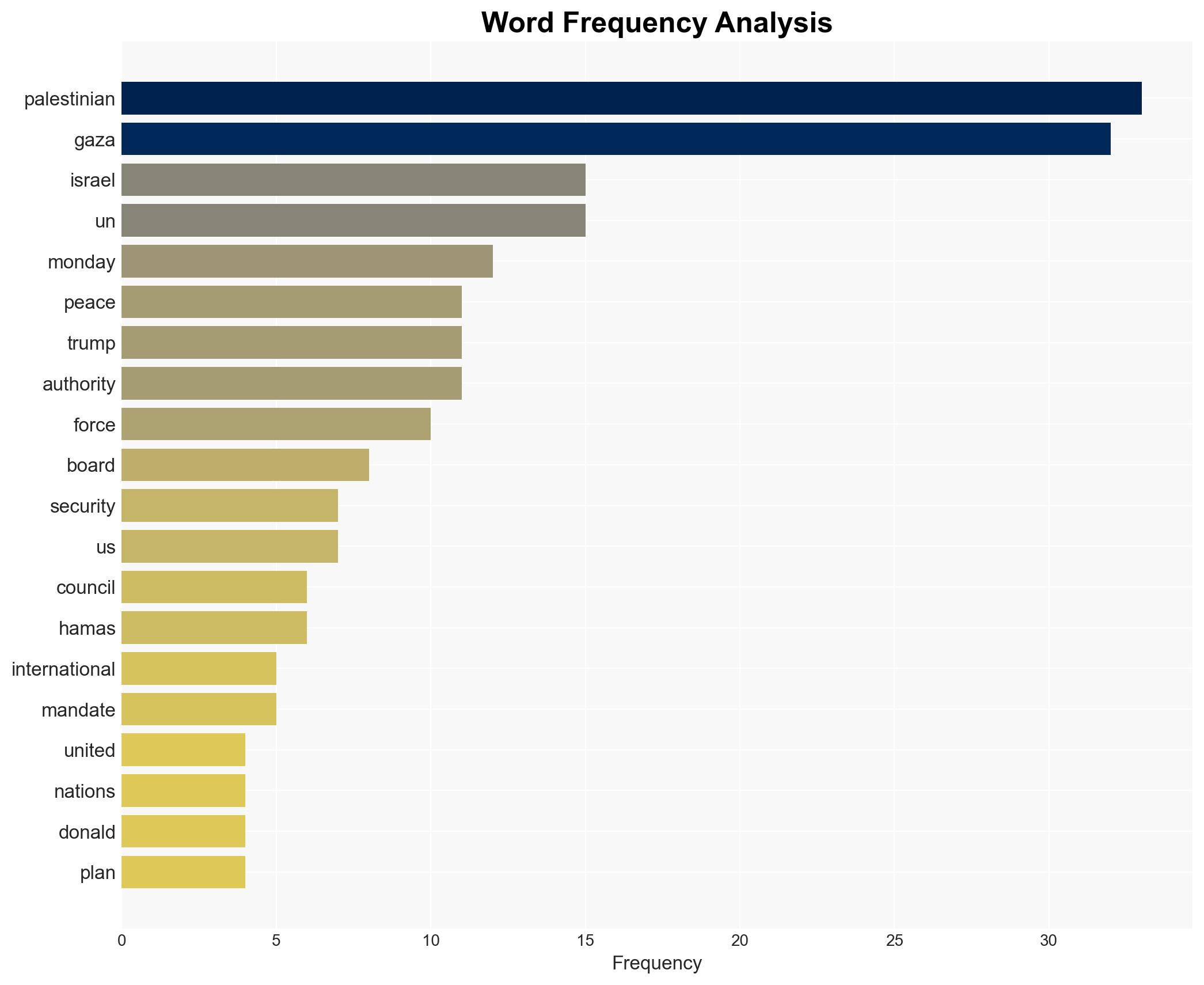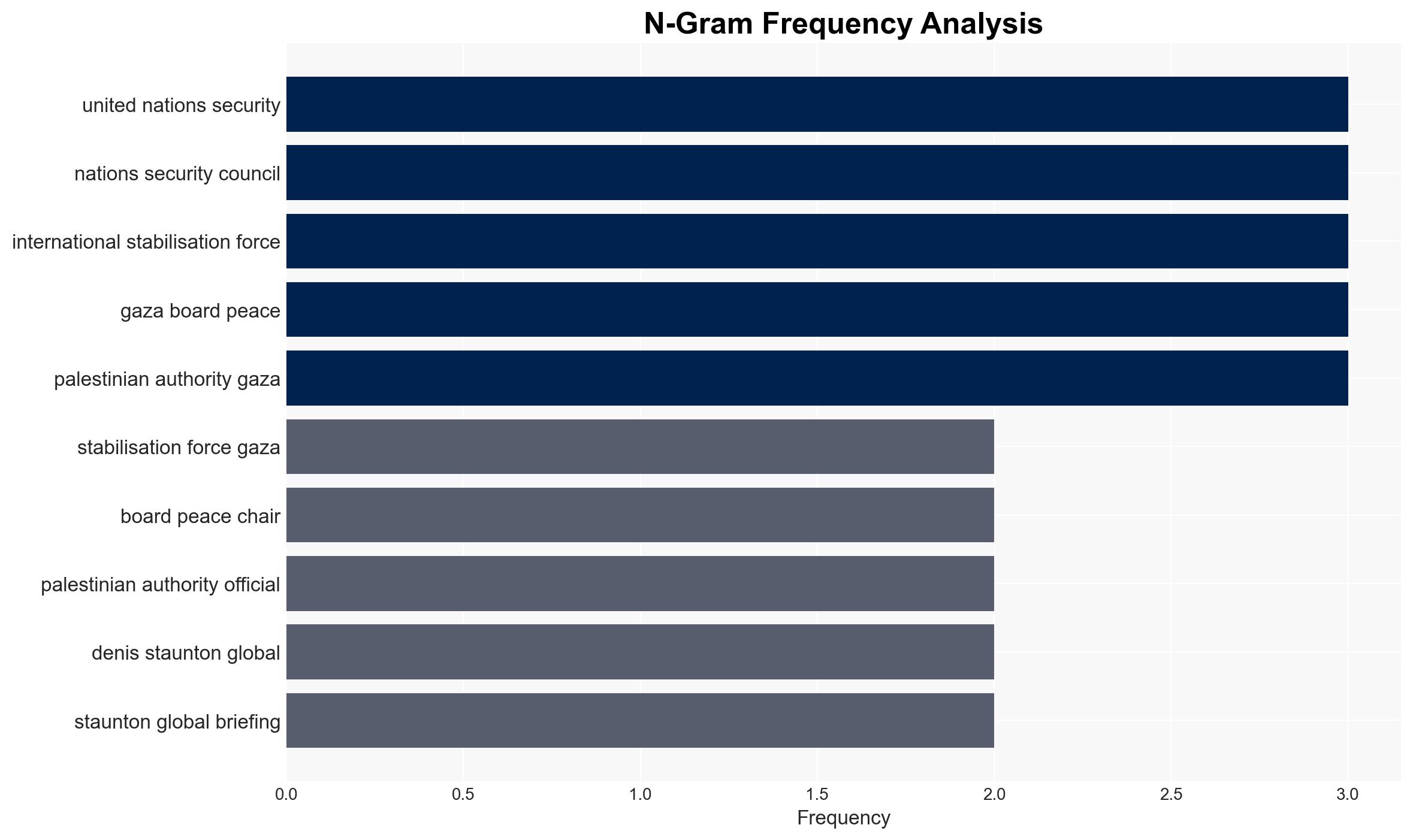A precarious path to peace in Gaza – The Irish Times
Published on: 2025-11-18
AI-powered OSINT brief from verified open sources. Automated NLP signal extraction with human verification. See our Methodology and Why WorldWideWatchers.
Intelligence Report:
1. BLUF (Bottom Line Up Front)
The establishment of an international stabilization force in Gaza, endorsed by the UN Security Council, presents a potential pathway to peace but is fraught with vulnerabilities. The most supported hypothesis is that the force will face significant challenges in implementation due to political opposition and operational complexities. Confidence level: Moderate. Recommended action: Strengthen diplomatic engagement with key stakeholders to ensure commitment and address potential sabotage efforts.
2. Competing Hypotheses
Hypothesis 1: The international stabilization force will successfully operate in Gaza, leading to a reduction in violence and a step towards lasting peace. This hypothesis is supported by the overwhelming support from the UN Security Council and the structured mandate of the force.
Hypothesis 2: The stabilization force will face significant resistance, both politically and operationally, leading to limited success and potential escalation of tensions. This is supported by the abstention of China and Russia, Israel’s opposition, and potential non-cooperation from Hamas and other local actors.
The second hypothesis is more likely due to the complex political landscape and historical challenges in the region.
3. Key Assumptions and Red Flags
Assumptions: The stabilization force will have adequate resources and international support; local actors will engage constructively; the mandate will be enforced impartially.
Red Flags: Israel’s opposition and rhetoric from officials like Itamar Ben-Gvir suggest potential non-cooperation or active sabotage. Hamas’s denunciation indicates possible resistance or violence against the force.
Deception Indicators: Statements from local actors may not reflect true intentions, particularly if aimed at international audiences.
4. Implications and Strategic Risks
Political Risks: Failure of the force could undermine international credibility and embolden hardliners on both sides.
Cyber and Informational Risks: Potential for misinformation campaigns to undermine the force’s legitimacy and objectives.
Economic Risks: Continued instability could deter investment and economic development in Gaza.
5. Recommendations and Outlook
- Actionable Steps: Engage diplomatically with Israel, Hamas, and other regional actors to secure commitments to the stabilization process. Enhance intelligence sharing and monitoring to preempt sabotage efforts.
- Best Scenario: Successful stabilization leads to reduced violence and a framework for long-term peace negotiations.
- Worst Scenario: The force faces violent resistance, leading to casualties and a collapse of international efforts.
- Most-likely Scenario: The force achieves limited success, with sporadic violence and political challenges persisting.
6. Key Individuals and Entities
Donald Trump (Chair, Board of Peace), Itamar Ben-Gvir (Israeli National Security Minister), Hamas (Local Actor), UN Security Council (International Body).
7. Thematic Tags
Regional Focus, Middle East, Peacekeeping, International Relations, Conflict Resolution
Structured Analytic Techniques Applied
- Causal Layered Analysis (CLA): Analyze events across surface happenings, systems, worldviews, and myths.
- Cross-Impact Simulation: Model ripple effects across neighboring states, conflicts, or economic dependencies.
- Scenario Generation: Explore divergent futures under varying assumptions to identify plausible paths.
Explore more:
Regional Focus Briefs ·
Daily Summary ·
Support us





